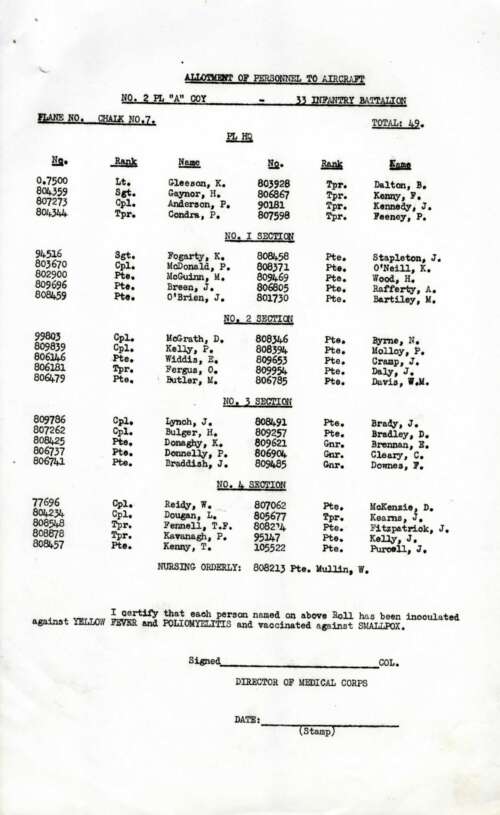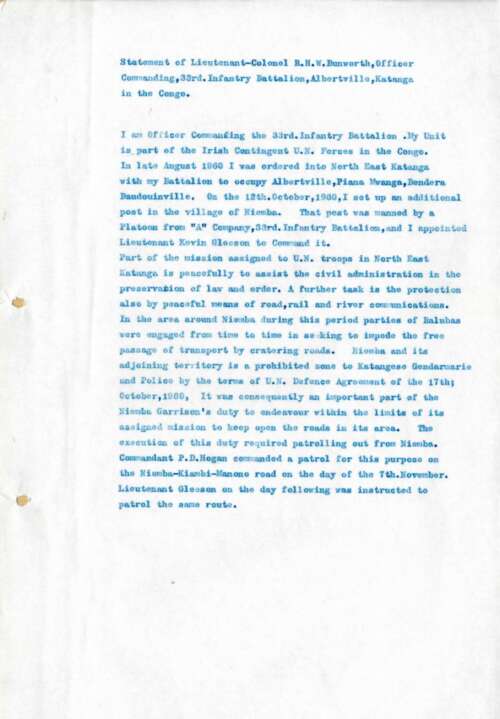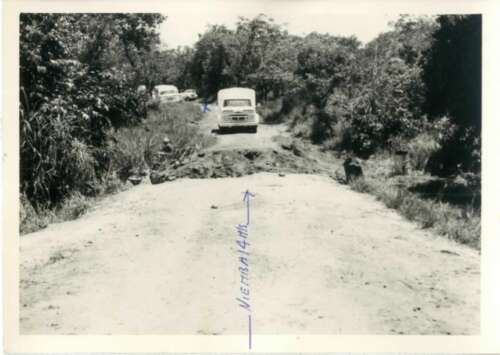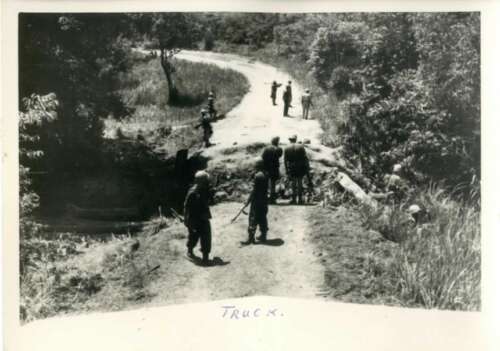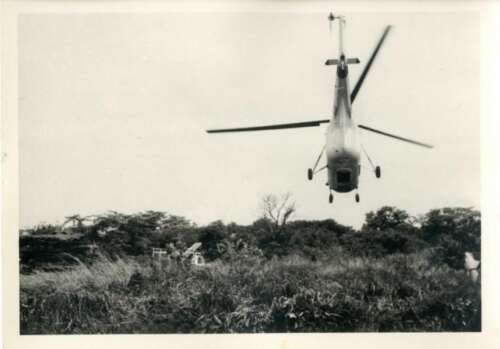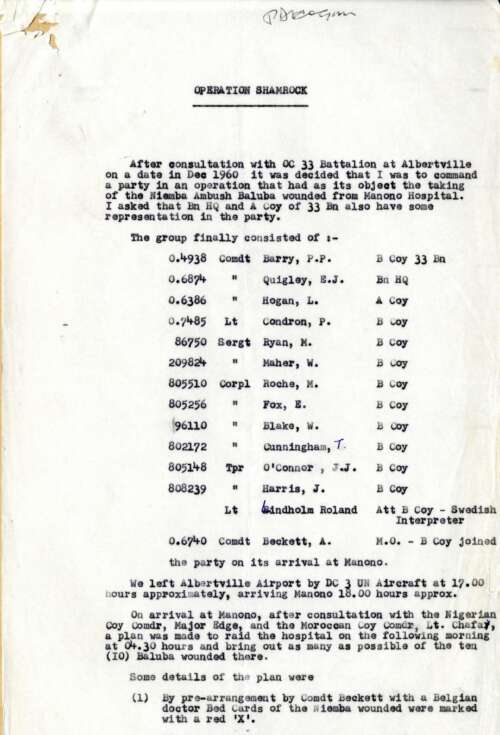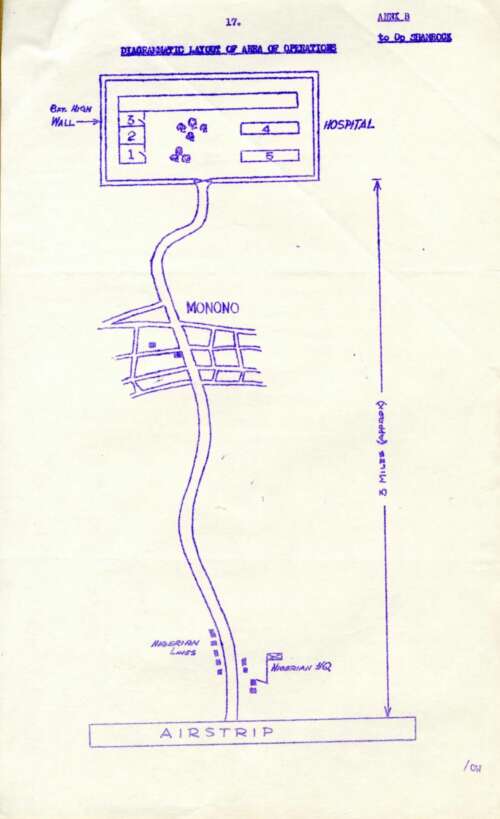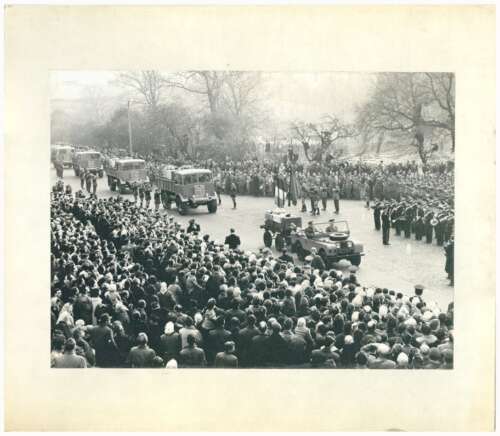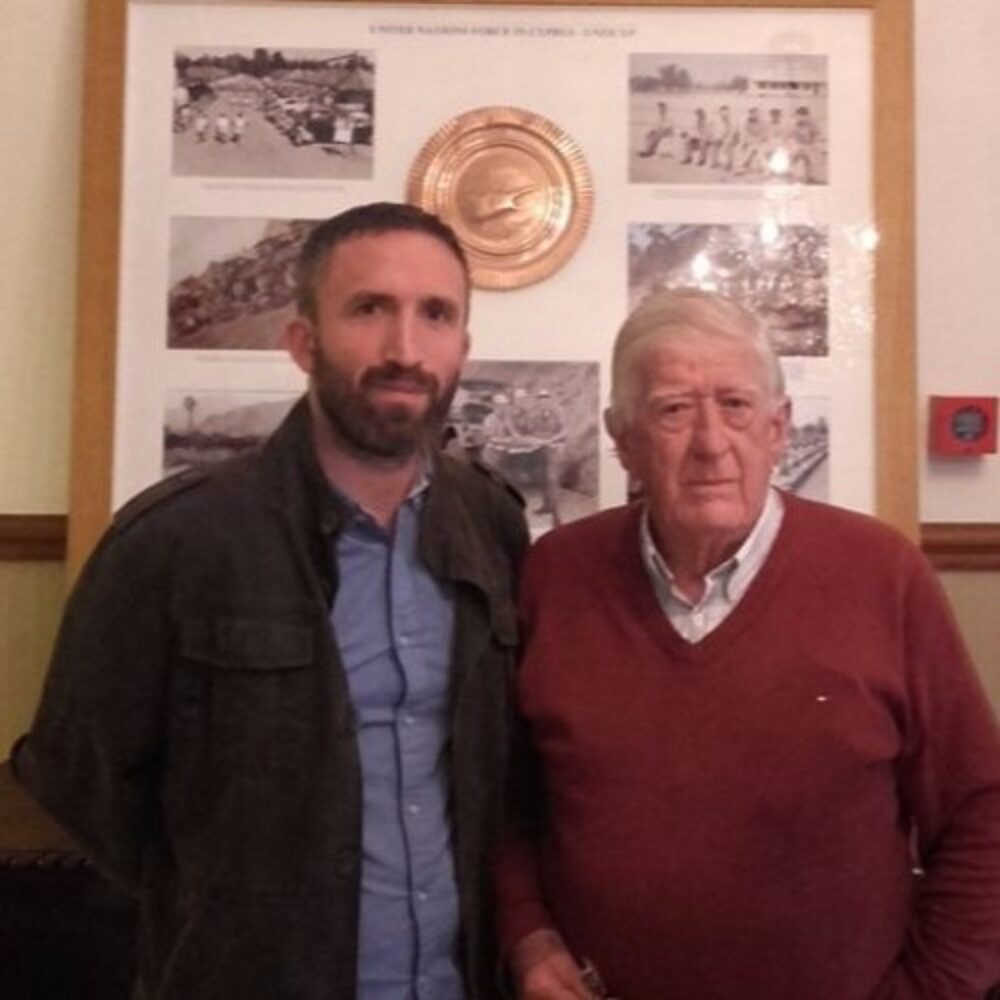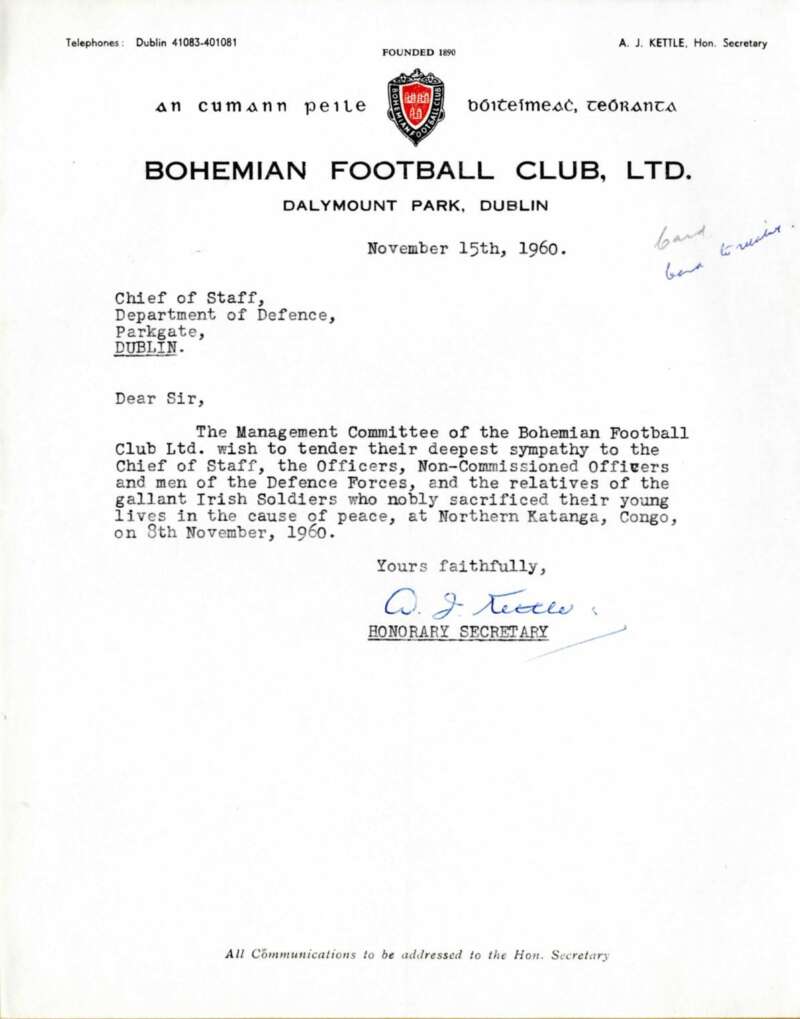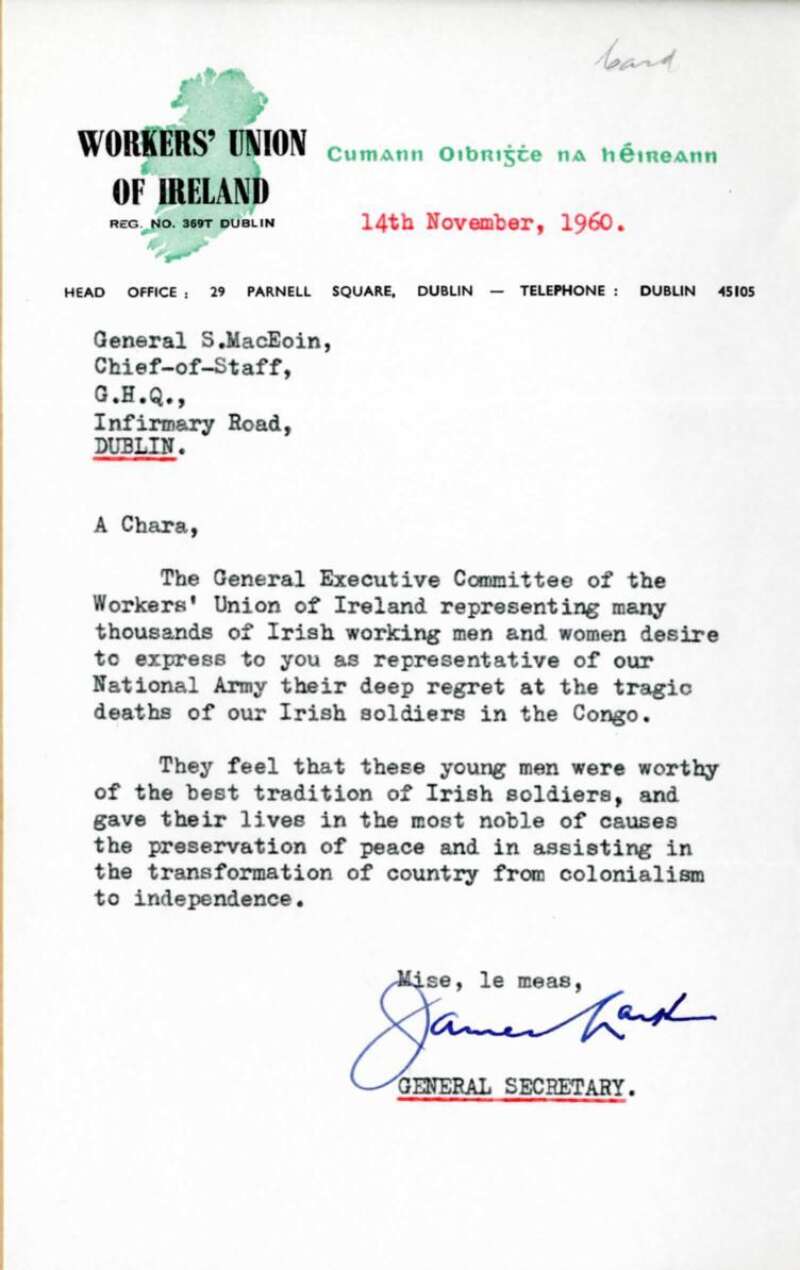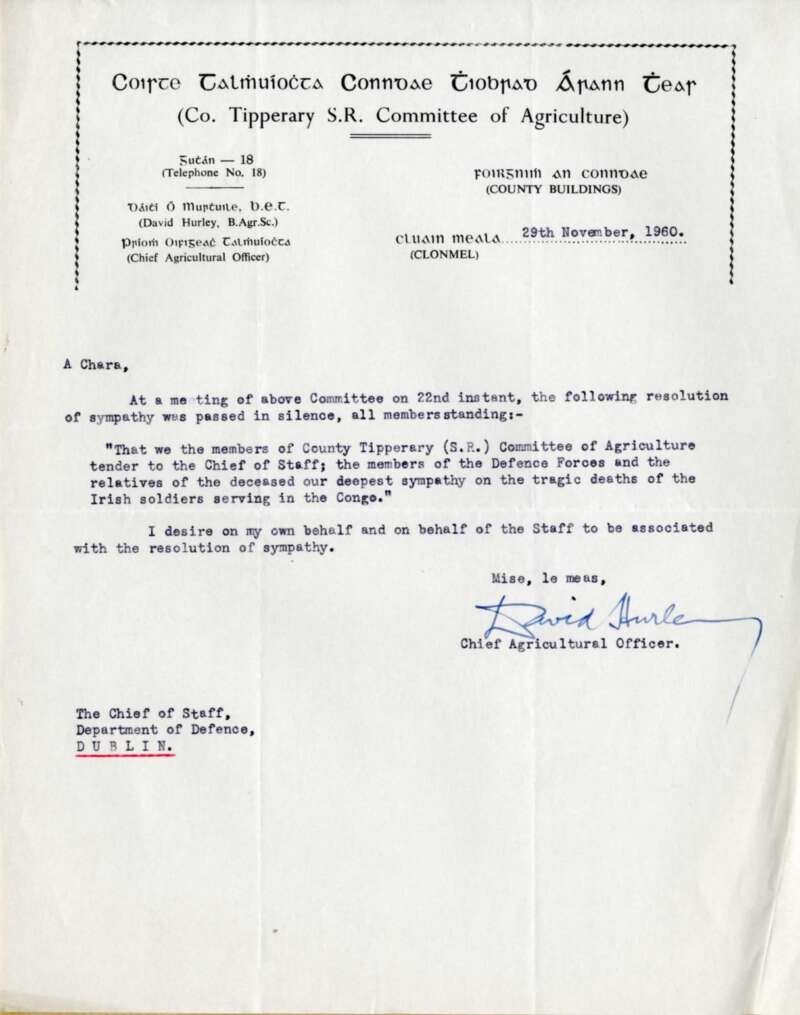ONUC – Peacekeeping Mission in the Congo
1960 saw the beginning of the Irish Defence Force’s four-year commitment to service in the Congo. Between 1960 and 1964, over 6,000 Irishmen served there. During this period of service 26 Irish soldiers lost their lives, 9 of which were killed during the Niemba Ambush 8 November 1960. The United Nations Operation in the Congo (Opération des Nations Unies au Congo) known as ONUC was established by Security Council resolution 143 on 14 July 1960. This was a result of the Congolese government requesting military assistance from the UN to maintain territorial integrity. ONUC was originally established to ensure the withdrawal of Belgian forces, to assist the Government in maintaining law and order, and to provide technical assistance. This was subsequently modified to include maintaining the territorial integrity and political independence of the Congo, preventing the occurrence of Civil War, and securing the removal of all foreign military, paramilitary and advisory personnel not under UN command, as well as all mercenaries.





